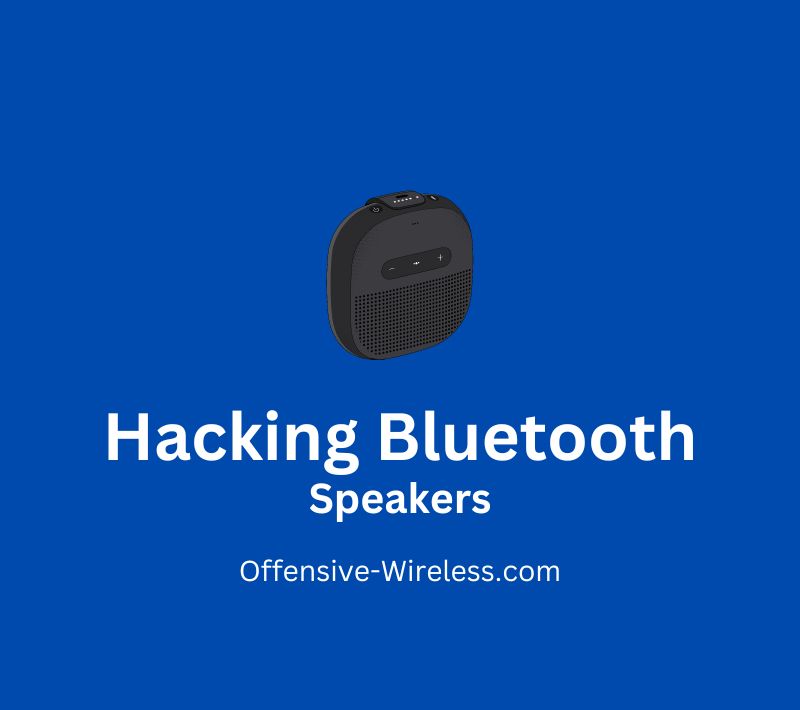It’s easy to get started with how to hack Bluetooth speakers!
Learn how to hack your devices and gain control of them with our comprehensive guide.
We’ll cover topics such as identifying vulnerable speakers, how to access root settings, strategies for wireless hacking, and best practices to keep your speakers secure.
All you need is a bit of technical knowledge and you’ll be hacking like a pro in no time!
Table of Contents
Bluetooth speakers have been around for many years and were originally designed to be paired with devices such as smartphones and tablets so that they could be used to transmit audio content wirelessly.
Since then, Bluetooth speakers have become more and more popular as people have realized the many advantages this type of device can offer.
One of the major advantages is that Bluetooth speakers allow for a greater degree of freedom when it comes to where and when audio can be played.
This article will discuss some of the ways you can use Bluetooth speakers and how to hack them so that they can be used for more than just playing music.
The Differences In Technology Between Bluetooth Speakers And Other Devices
The most basic difference between Bluetooth speakers and other devices is the technology used to transmit audio content. Bluetooth speakers use the 2.4 GHz version of the so-called Bluetooth technology, which was originally designed for low-speed, short-range connections such as pairing devices and exchanging small packets of data.
Older versions of Bluetooth used ultra-low-power (ULP) technology, which is similarly based on pairing and data transmissions but uses a far lower (and therefore considerably less power-consuming) power frequency.
Other devices, such as smartphones, tablets, and laptops, use acoustic (AC) coupling (also known as sound field coupling or direct-sound coupling) technologies to transmit audio. With acoustic coupling, the audio content is transmitted directly from one device to another without being stored in either device beforehand.
This type of technology requires considerably more power than Bluetooth technology and can only transmit a limited volume of data at a time.
However, one of the major drawbacks of acoustic coupling is that it is highly susceptible to coupling losses, which can dramatically reduce the quality of the audio content.
Because of the power consumption differences and the quality control issues that can arise from using acoustic coupling, you should not use this type of technology if you are looking for a high-quality audio product.
However, if you are looking for a simple and easy-to-use solution that can be paired with almost any device, then acoustic coupling is the way to go.
How Do I Pair Or Connect A Bluetooth Speaker To My Device?
To pair or connect a Bluetooth speaker to your device, you will need to follow the instructions that are built into the device itself.
This process can vary by device but usually entails turning on the Bluetooth speaker, selecting the device (typically a mobile phone) that you want to pair it with from a list, and then pressing and holding the Bluetooth button on the device and then the microphone button on the Bluetooth speaker until the connection is made.
When the connection is made, you will see a light on both devices indicating that they are connected and working properly.
If you want to continue using the device and Bluetooth speaker together, you will then need to discover each other’s presence in the networks.
To do this, you will need to press the pairing button again on both devices and then enter a password if prompted. Once this process is complete, you will then be able to use the devices together as before.
What Is The Max Data Transmission Capacity Of A Bluetooth Speaker?
One of the most important aspects of any wireless device is the data transmission capacity, or how much data the device can transfer per unit of time.
Bluetooth speakers that are of a certain standard are advertised to have a data transmission capacity of up to 14.0 kbits/s, which can then be exploited to transmit audio in real time.
This is highly dependent on how your Bluetooth speaker is configured, so make sure that you are using the right type of encoding and that the speaker is not being overloaded by too many devices or sources of audio content.
Should I Go For A Wireless Version Of A Bluetooth Speaker?
If you want to avoid charging your device’s battery too much, then you should look into wireless Bluetooth speakers, as opposed to the wired versions. These devices achieve the same purpose but do not require an electric jack to be plugged in for power.
Wireless versions of Bluetooth speakers can operate for a longer time before needing a recharge, which can then be done either wirelessly (if the device is equipped for that) or through an external power adapter.
What Is The Range Of A Bluetooth Speaker?
Besides being able to transmit audio content, the range of a Bluetooth speaker is also important to consider.
This is particularly relevant if you are trying to use the device in an area where there is a large amount of electricity generated by other devices, as this can interfere with the signal and cause the device to fail.
To avoid this, you should look into a Bluetooth speaker with a range of at least 10 meters, which should be enough for practically any room.
How Many Devices Can I Pair My Bluetooth Speaker With?
Another important thing to consider regarding Bluetooth speakers is how many devices you can pair with them. This is dependent on the hardware and software configuration of the device but can range from just one to several tables of contents (TOCs) at once.
If you have a single TOC, you can only pair this device with one other at a time. If you have multiple TOCs, then you can make multiple connections and use the devices together as before the pairs were made. This brings us to our next point.

